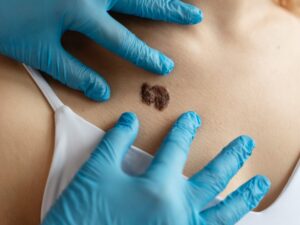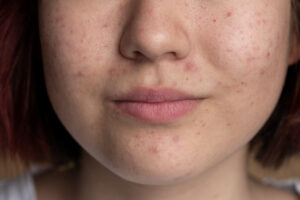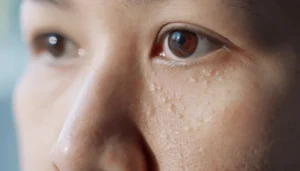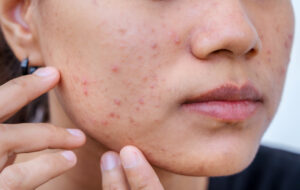Key Pointers
- Birthmarks are broadly divided into pigmented and vascular types.
- Treatments vary depending on type, size, and location.
- Options may include laser therapy, surgery, or monitoring.
- A dermatologist’s assessment is essential before treatment.
Birthmarks are common skin features that can appear at birth or develop in early childhood. While many are harmless and do not need treatment, some may cause cosmetic concern, discomfort, or medical complications.
Because birthmarks are not all the same, treatment is never a “one-size-fits-all” approach. The type of birthmark, whether pigmented or vascular, plays a major role in determining how it should be managed.
Pigmented Birthmarks
Pigmented birthmarks occur when there is an overgrowth or clustering of pigment cells in the skin. They vary in colour, shape, and size. Common examples include:
- Café-au-lait spots – flat, light brown patches.
- Congenital melanocytic naevi – dark, mole-like birthmarks present at birth.
- Mongolian spots – bluish-grey patches often seen on infants, which usually fade over time.
Treatment considerations:
- Small, stable pigmented birthmarks may not need intervention.
- Larger or changing lesions should be evaluated to rule out risks.
- Options may include monitoring, surgical removal, or laser treatment, depending on the appearance and clinical findings.
Vascular Birthmarks
Vascular birthmarks are caused by abnormal growth or clustering of blood vessels in the skin. They can be red, purple, or blue in colour and may change over time. Common examples include:
- Salmon patches (“stork bites”) – flat, pink patches often seen in newborns.
- Infantile haemangiomas – raised, bright red growths that may enlarge before eventually shrinking.
- Port-wine stains – flat, dark red or purple marks that may deepen in colour with age.
Treatment considerations:
- Some vascular birthmarks fade naturally and only require observation.
- Others, especially larger or persistent ones, may need intervention.
- Options can include laser therapy (to lighten or reduce blood vessels), medications, or surgical removal in selected cases.
Tissue Overgrowth Birthmarks
Some birthmarks are caused by an overgrowth of specific skin tissues such as oil glands, hair follicles, or epidermal layers. These are known as tissue overgrowth birthmarks and include:
- Naevus sebaceous – usually seen at birth or early childhood as a yellowish, hairless patch, often on the scalp or face. It may thicken or become more raised with age.
- Epidermal naevus – appears as warty, linear streaks or patches on the skin, caused by an overgrowth of the epidermis (the top layer of skin).
- Becker’s naevus – typically develops during adolescence, presenting as a large, pigmented patch often with increased hair growth, usually on the upper body.
- Most tissue overgrowth birthmarks are benign but can be cosmetically noticeable.
- Excision is usually advised for naevus sebaceous as there is a risk of secondary tumours, both benign and malignant, later in life.
- Management options can include surgical excision, laser treatment, or observation, depending on the type, size, and location.
- A dermatologist’s evaluation is important to determine whether treatment is needed or if watchful monitoring is sufficient.
Why Treatments Differ
No two birthmarks are exactly alike, even within the same category. The best approach to management depends on several factors, including:
- Type of birthmark – whether it is pigmented, vascular, or due to tissue overgrowth.
- Size and depth – superficial spots may respond to laser therapy, while deeper or thicker lesions might require surgery or other methods.
- Location – marks near sensitive areas such as the eyes, lips, or joints often need special consideration.
- Potential risks – some birthmarks may ulcerate, bleed, or, in rare cases, undergo changes that require closer monitoring.
Because of these differences, personalised care is essential. A treatment that works well for one type of birthmark may not be appropriate—or effective—for another.
Conclusion
Birthmarks may seem simple, but their management is highly individualised. Whether pigmented or vascular, each type requires careful assessment to determine the safest and most effective approach.
If you or your child has a birthmark and you’re unsure what steps to take, consulting a dermatologist can provide clarity and reassurance.
Frequently Asked Questions About Birthmarks
Do all birthmarks need treatment?
No. Many birthmarks are harmless and do not require any intervention. Treatment is usually considered if a birthmark causes cosmetic concern, functional problems, or has a risk of complications.- Can birthmarks disappear on their own?
Some birthmarks, like infantile haemangiomas or Mongolian spots, may fade with time. Others, such as café-au-lait spots or port-wine stains, tend to persist. - What treatments are available for birthmarks?
Depending on the type, options may include laser therapy, medications, surgical removal, or observation. Your dermatologist will recommend the most suitable approach. - When should I see a dermatologist about a birthmark?
If a birthmark is growing, changing in colour, causing discomfort, or located near sensitive areas like the eyes or mouth, it is best to seek a dermatologist’s opinion.
- Conveniently located at Farrer Park Hospital
- Monday to Saturday (by appointment)
- Call us at 6518 4336 or book a consultation online










